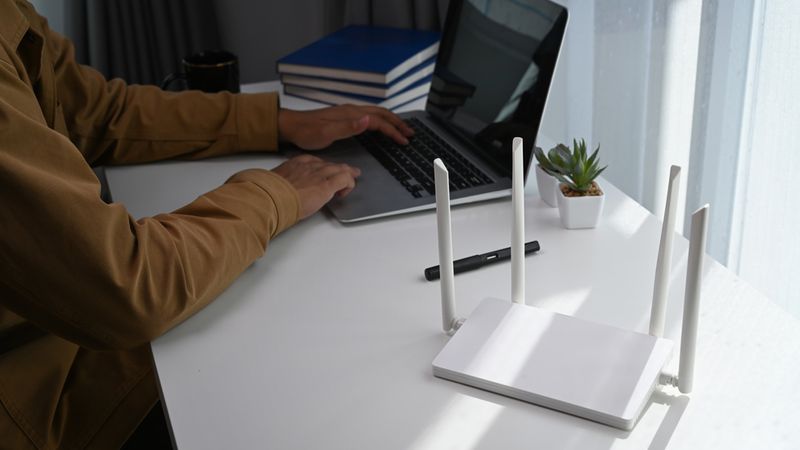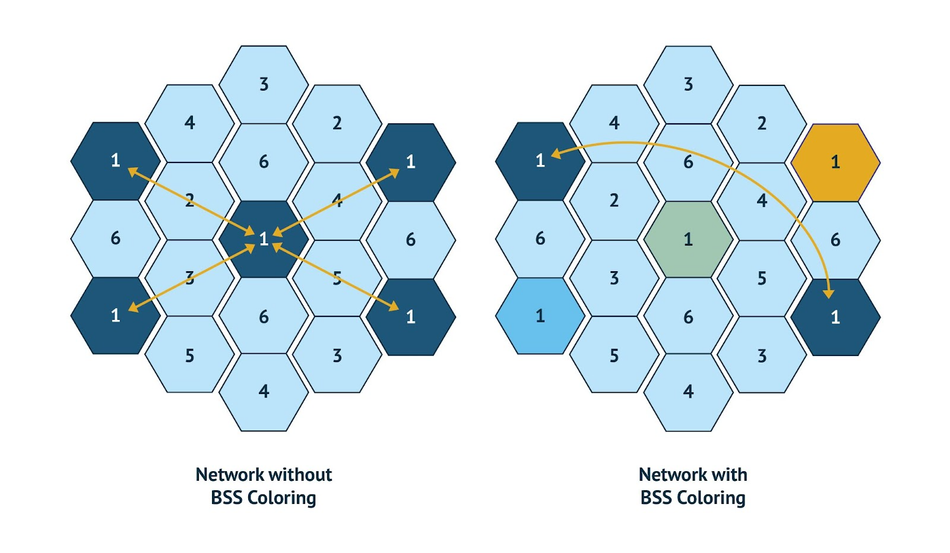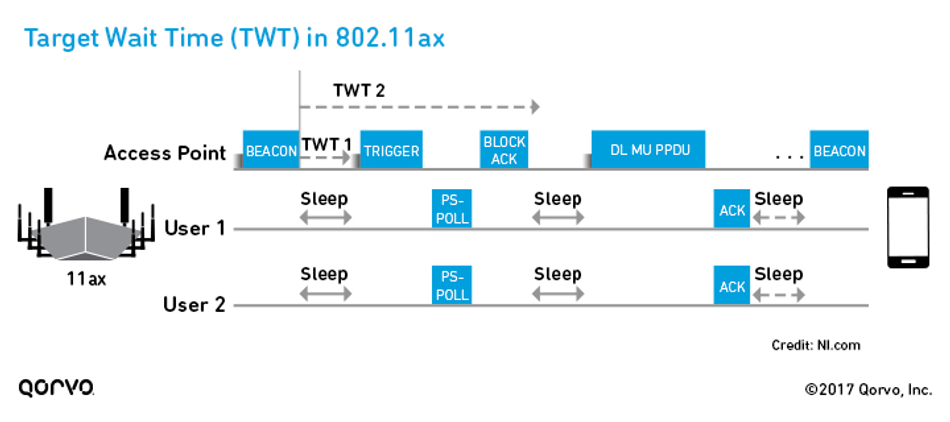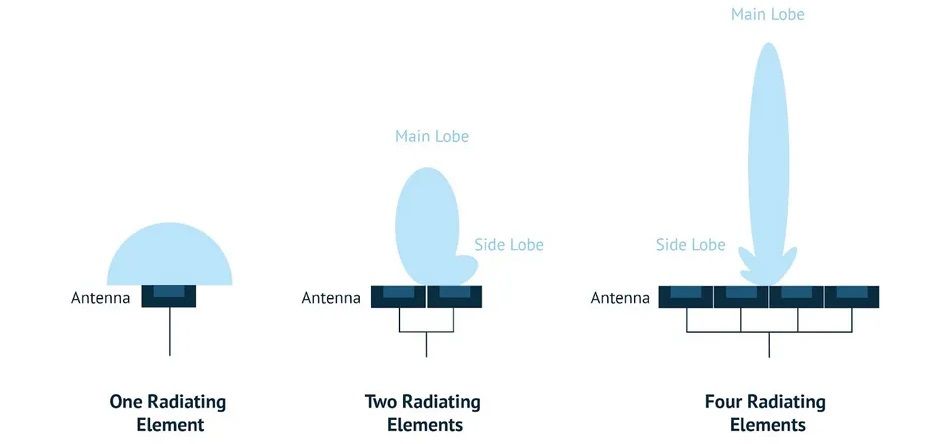Six technologies enabling Wi-Fi 6E
Article #3 of Next-Gen Wi-Fi Applications and Solutions Series: OFDMA, BSS Coloring, TWT, Beamforming, 8X8 MU-MIMO, and 1024-QAM are some key features of Wi-Fi 6/6E that set it apart from all the previous generations of the IEEE 802.11 family.
This is the third article in a 6-part series featuring articles on Next-Gen Wi-Fi Applications and Solutions. The series focuses on the improvements Wi-Fi 6/6E and its applications bring to enhance the performance of the next-gen wireless networking devices. This series is sponsored by Mouser Electronics. Through the sponsorship, Mouser Electronics shares its passion for technologies that enable smarter and connected applications.
We’ve all experienced lousy Wi-Fi connectivity at public places like airports, shopping malls, restaurants, theaters, and more. Previous Wi-Fi generations couldn’t handle interference created in crowded places well, which is why users experienced slowdowns.
This article covers Wi-Fi 6/6E technologies to explain how it successfully manages to get a large number of users connected together. By providing a high-level overview of the technical aspects, we explain why Wi-Fi would never be the same again.
Wi-Fi 6 features and technologies
As discussed in the first and the second article of our ongoing series on Next-Gen Wi-Fi Applications and Solutions, research in wireless communication is now focused more on making the most out of available data rates instead of trying to push its theoretical limits.
Along with increased performance expectations, Wi-Fi systems are now expected to cater to a higher density of devices with a very diverse set of applications. In this section, we share some technologies enabling the latest generation of Wi-Fi to deal with modern challenges.
Orthogonal Frequency Division Multiple Access (OFDMA)
OFDMA is a successor to Orthogonal Frequency Division Multiplexing (OFDM), a widely used modulation scheme in wireless digital communication for encoding data on multiple carrier frequencies. In the previous Wi-Fi generations, OFDM was used along with statistical time-division multiplexing.
Due to the way the modulation worked, the Wi-Fi Access Points (APs) could talk to only one user at a time. During communication, the entire frequency band is occupied but not utilized, causing a sheer wastage of energy and time. While AP tries to communicate with user devices, user devices are also trying to communicate with the AP, and as the number of devices (new Internet of Things gadgets) goes up, things get slowed down even further.
OFDMA solves these problems by allowing simultaneous transmission of digital data to multiple users. The frequency still remains the same, but instead of allocating the entire band to a single user, the channel is now split into multiple lanes, and resources are allocated based on the users’ individual requirements.
This allows for more efficient multi-user communication, which is visible in densely connected locations like conference rooms, offices, malls, and even homes with multiple IoT devices. The approach of allocating a small lane for each connected device to communicate on can also improve the functioning of devices that require real-time communication like the ones used in hospitals.
Basic Service Set (BSS) Coloring
Wi-Fi follows a BSS topology that allows multiple wireless devices to communicate with each other through a common AP that can be identified with a Basic Service Set Identifier (BSSID) and a Service Set Identifier (SSID). The devices connected to a network do not communicate directly with each other but use AP as a means to do so. When multiple Wi-Fi APs are available in a region, congestion occurs, which is a major cause of the slowdown.
Wi-Fi 6 brings BSS coloring to use the available spectrum efficiently. Frequencies are marked with a specific code (called color) in the Physical layer (PHY) header, passed between the AP and the device. This prevents overlapping BSS resulting in an overall improvement in the network's performance.
Target wake Time (TWT)
Functionally, most IoT devices do not require constant data connectivity. However, earlier generations of Wi-Fi had no system in place to manage the schedules of initiating a data transfer and hence kept blasting Wi-Fi radio signals all the time. This approach not only increased interference but was highly inefficient. In the case of tiny IoT devices running on a portable power supply, saving each and every bit of power is crucial.
TWT is a feature introduced with Wi-Fi 6 that enables the device and AP to figure out a schedule about when they need to wake up and communicate with each other. Consider, for example, an IoT device that senses ambient temperature and reports it via Wi-Fi. It need not always be connected with the network. Instead, the device and AP can communicate at regular intervals and decide to go to sleep when no connectivity is required. This improves the battery life of both the device and the AP, also resulting in energy savings in networks with a large number of devices without any change in the battery technology.
Beamforming
Beamforming is a Radio Frequency (RF) management technique that directs signals toward specific user devices instead of spreading them all around. It is not entirely new to Wi-Fi as the technology existed before Wi-Fi 6. However, its efficacy has been dramatically improved lately.
The technique is implemented by putting a bunch of antennas in a single AP at different physical positions. Depending on the performance, the best configuration is determined by an onboard controller. The advantage of beamforming appears as extended range and increased data transfer speeds. The feature can make a considerable difference if the client device is far from the AP.
8X8 Multi-User Multiple Input Multiple Output (MU-MIMO)
MU-MIMO doesn’t directly affect data transfer rates but offers a way to reduce interference by allowing multiple users to connect to the AP simultaneously. The previous generation of Wi-Fi (IEEE 801.11ac) supported MU-MIMO, but only in the 5 GHz band, had only 4 simultaneous streams, and only affected downloads.
Wi-Fi 6 overcomes the drawbacks of the previous generation by adding 2.4 GHz support for MU-MIMO along with the 5 GHz band. The new Wi-Fi standard supports 8 or more simultaneous streams and improves both downloads and uploads.
W-Fi 6E takes a step further by expanding its operating frequency to the 6 GHz band. This move comes right after the Federal Communications Commission allowed unlicensed use of 6 GHz in 2020.
1024 Quadrature Amplitude Modulation (QAM)
QAM is essentially an amplitude, and phase modulation scheme used when converting the digital data into analog RF signals. By increasing the depth of the QAM, it is possible to pack more data efficiently within the same frequency band. [1]
1024 QAM used in Wi-Fi 6 is a step up from 256 QAM that IEEE 802.11ac (Wi-Fi 5) uses. It now packs 4 times more data during transmission, which directly increases the overall throughput (data rates). Making use of a more complex modulation scheme causes a dip in noise immunity, but the other Wi-Fi 6/6E features manage to fairly compensate for it to take the collective performance of the whole system to the next level.
Key elements of Wi-Fi 6/6E solutions by Qorvo
Qorvo manufactures next-generation RF smarts and solutions to connect people, places, and things faster, further, and more reliably. Solutions developed by Qorvo are all around – making a better, more connected world possible. Check out the complete range of products, videos, e-books, and other resources by Qorvo on Mouser Electronics.
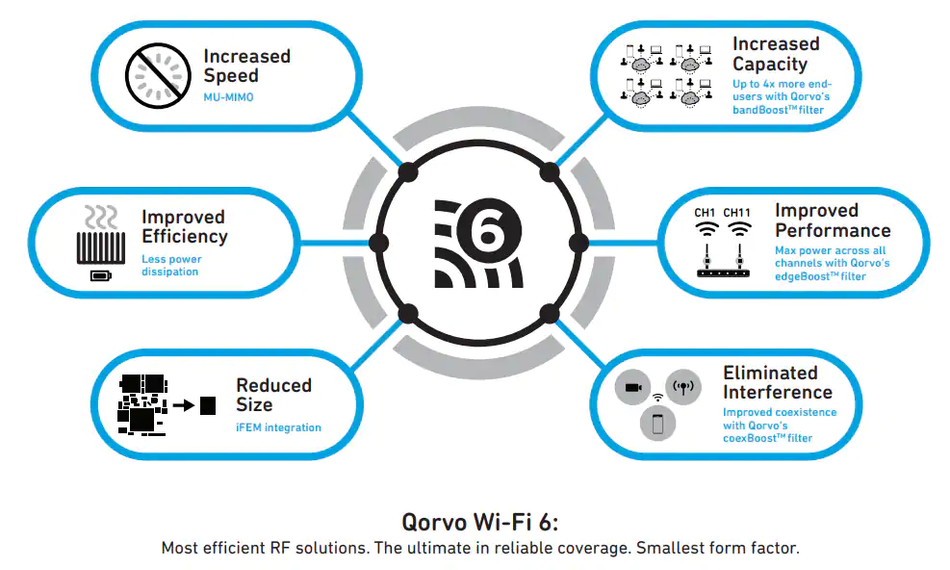 Key elements of Wi-Fi 6 solutions by Qorvo. Source: Mouser-Qorvo
Key elements of Wi-Fi 6 solutions by Qorvo. Source: Mouser-Qorvo

Conclusion
The performance improvements brought in by the Wi-Fi 6/6E can be attributed to the improvements in modulation schemes, spatial streams, channel bonding, and airtime efficiency. The improved wireless local area networking technology has the potential to transform personal and high-density wireless deployments completely.
This article was initially published by Mouser and Qorvo in an e-magazine. It has been substantially edited by the Wevolver team and Electrical Engineer Ravi Y Rao. It's the third article from the Next-Gen Wi-Fi Applications and Solutions Series. Future articles will introduce readers to some more interesting applications of the technology in various industries.
- The introductory article provided an overview of wireless communication and the subsequent articles of the series.
- The first article explored the origins and the evolution of WiFi to showcase how the wireless local area networking standard improved over time.
- The second article was focused on recent trends and the design philosophy behind WiFi 6/6E. The article explains why even with a marginal improvement in raw data rates, WiFi 6/6E is the biggest upgrade yet.
- The third article dives into the technicalities of WiFi 6/6E. It explains the 6 enabling technologies of WiFi 6/6E including OFDMA, BSS Coloring, TWT, Beamforming, 8X8 MU-MIMO, and 1024-QAM.
- The fourth article is a comparison between WiFi and 5G based on some of the key performance parameters. It tries to form a perspective regarding which technology is suitable for different use cases.
- The fifth article features a discussion on where the wireless communication industry is headed to. Concepts like mesh WiFi networks are explored with excerpts from an interview with Cees Links, General Manager of the Low Power Wireless Business Unit in Qorvo and one of the leading pioneers of WiFi.
- The final article introduces the readers to the concept, benefits, and applications of BAW filters in WiFi, 5G, and other RF communication systems designs.
About the sponsor: Mouser Electronics
Mouser Electronics is a worldwide leading authorized distributor of semiconductors and electronic components for over 1,100 manufacturer brands. They specialize in the rapid introduction of new products and technologies for design engineers and buyers. Their extensive product offering includes semiconductors, interconnects, passives, and electromechanical components.

References
[1] Wi-Fi 6 (802.11ax): 5 Things to Know, Qorvo, [Online], Available from: https://www.qorvo.com/design-hub/blog/80211ax-5-things-to-know
Tags

